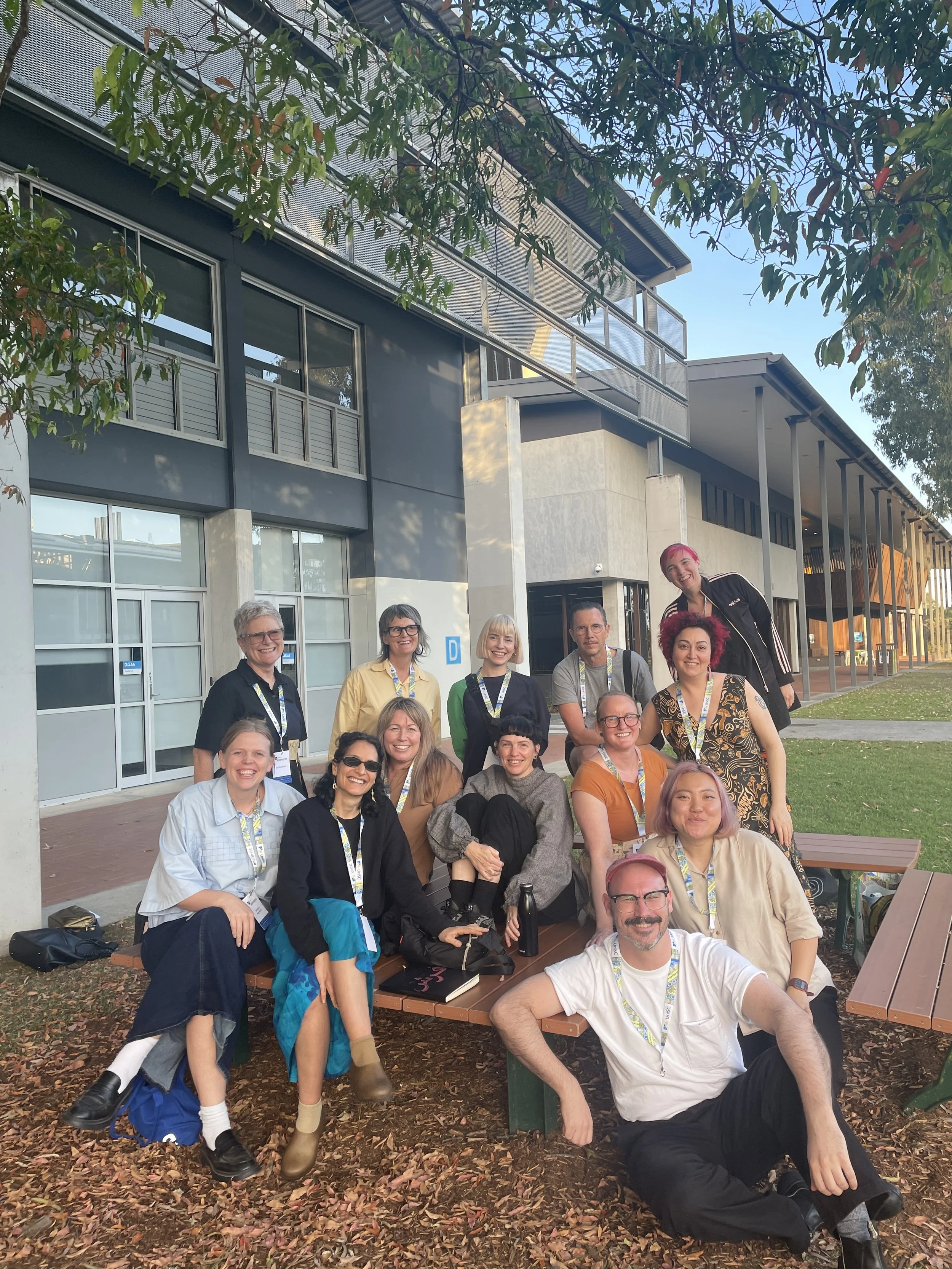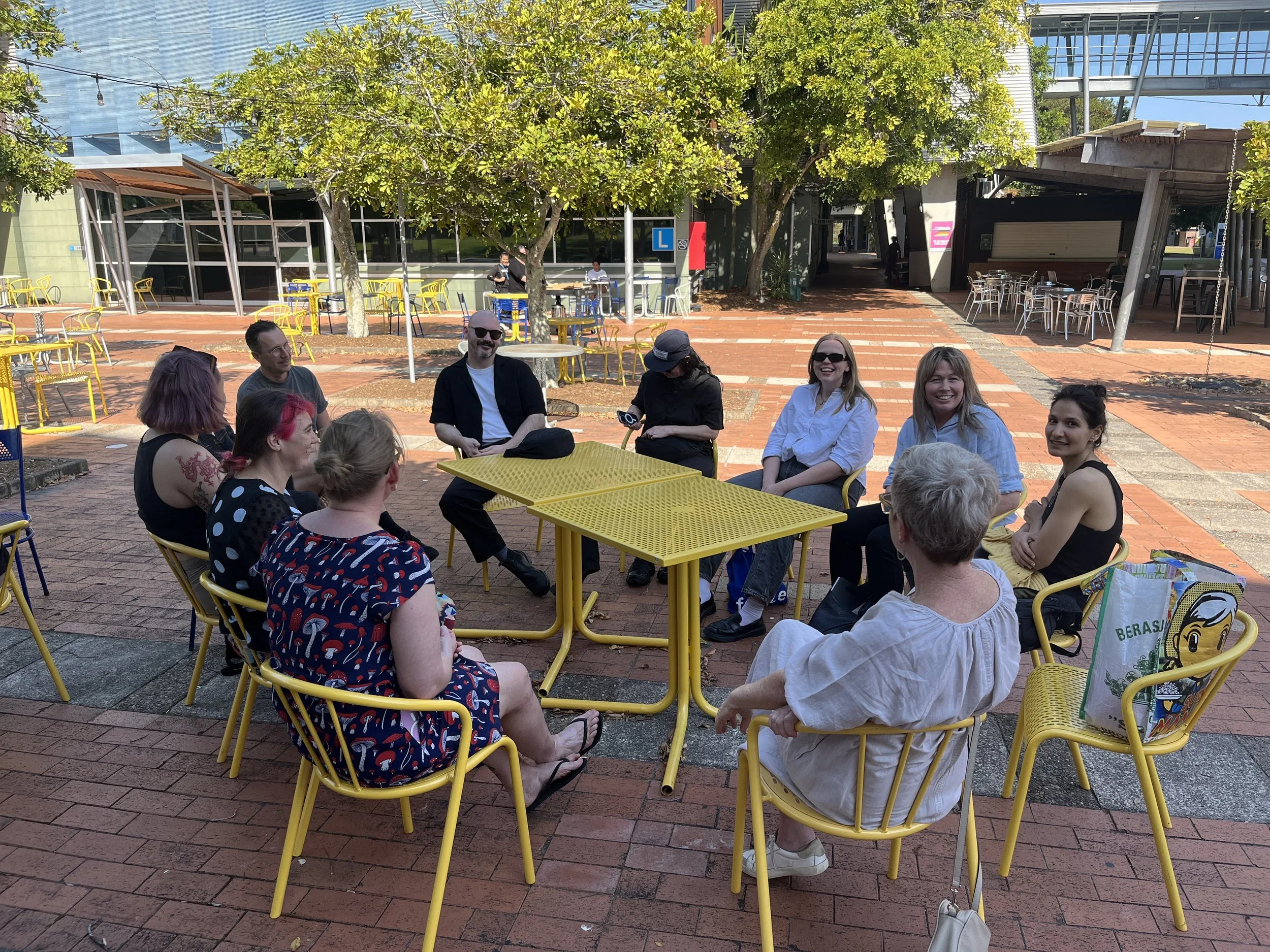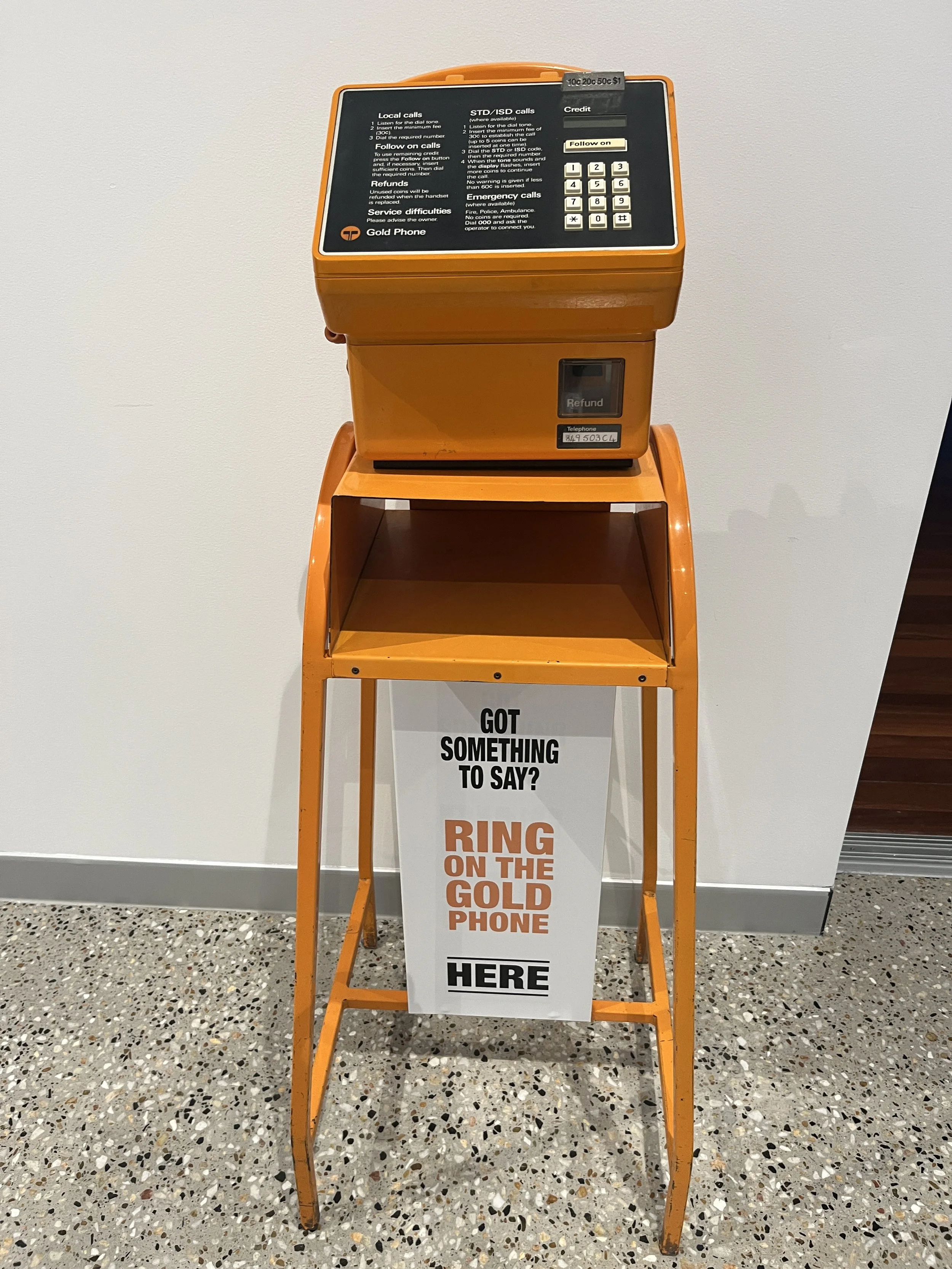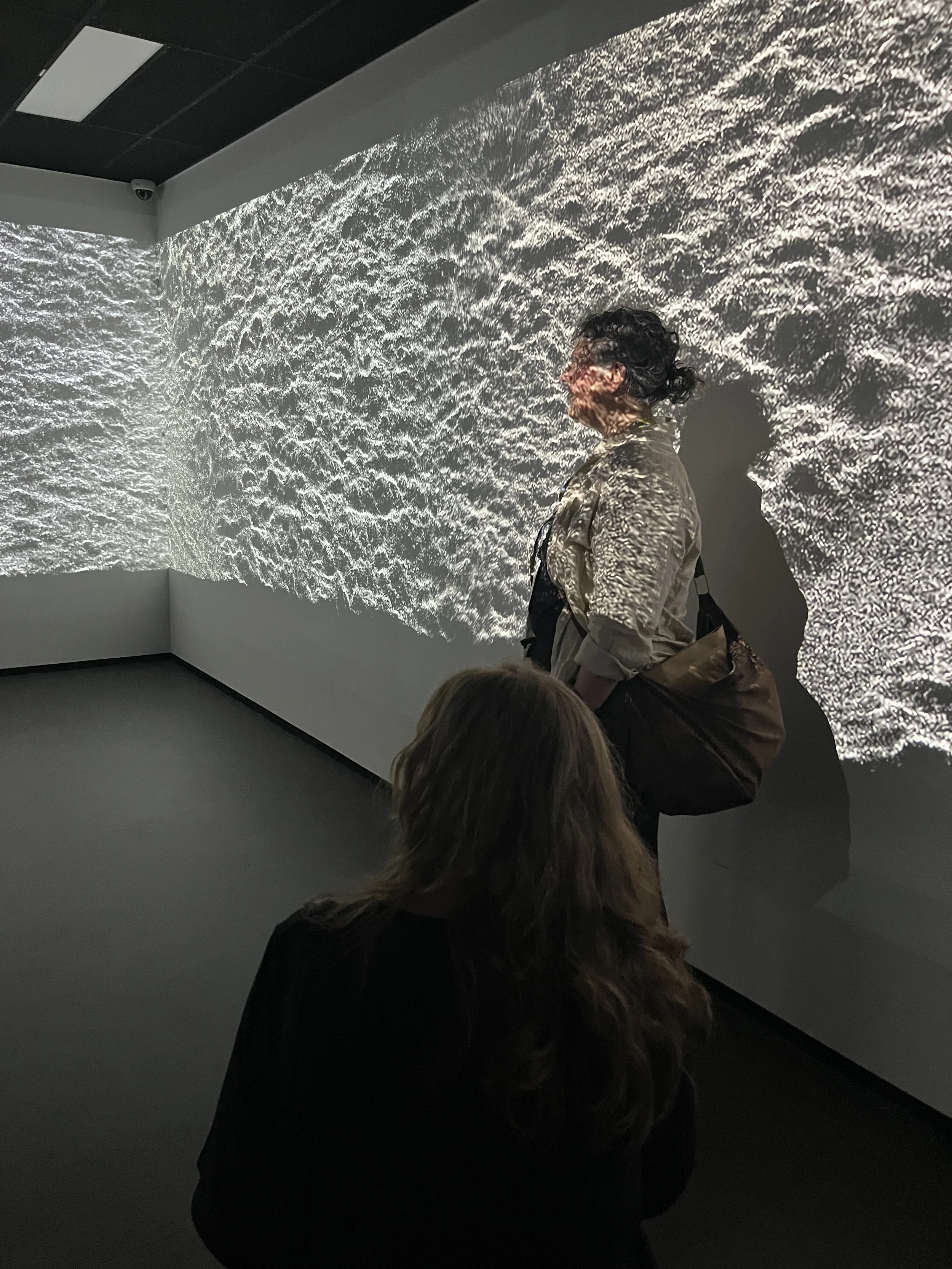Critical Light Radiates at ANAT Spectra: Reciprocity
ANAT Spectra: Reciprocity at UniSC in early October provided the perfect context for R|Short Program: Critical Light. Supported by Creative Australia, 10 early-career artists from across Australia gathered to experience, engage with, and discuss the exceptional program presented at this three day event. Provocateur Kieran Swann acted as a kind of pied piper — though rather than leading the group away, he led them deeper into days of rich discussion and connection.
Day One, themed GATHER, began with each member of the Critical Light cohort introducing themselves by describing their interests and practices within an attentive circle. Kieran opened with a provocation: a reflection on Future Library by Katie Paterson, an artwork that holds time as a medium by considering audiences beyond the present. He offered this as a frame for the artists to consider the legacy of their own work — how do we create with emergent technologies in ways that are deeply of the moment yet resonate beyond ourselves?
ANAT Spectra: Reciprocity began with a heartening Welcome to Country by Traditional Custodian Lyndon Davis and Gubbi Gubbi Dance, followed by speeches from the host partners, the Australian Network for Art and Technology (ANAT) and UniSC.
With the event officially underway, the Critical Light cohort joined other guests in the adjacent lecture theatre for the first session of the screen program, featuring works by Lyndon Davis and Leah Barclay (Beeyali), Yimbala Maranoa Arts Collective (Terrarara: Precious Earth), and local artist Amanda Bennetts, who presented Latency and Lacerations — a video artwork developed during R|Artist Residency: Urban Ecologies. The three works offered rich ground for discussion, both thematically and technically, prompting reflection on how form and method shape audience experience.
With the UniSC Art Gallery open late, a delicious spread by First Nations caterers Nooks and Cooks, and a live performance program, the evening was full and generous.
Day Two, themed CONVERSE, began early on campus. With the first day’s experiences still resonating, the cohort dived straight into conversation. Kieran invited further reflection on the previous day’s works and then introduced NowhereIsland, a project by artist Alex Hartley created as part of the 2012 London Cultural Olympiad. The work — an island revealed by melting Arctic ice — became a powerful symbol of displacement and a critique of climate change, exploring global citizenship and the redistribution of land to an imagined citizenry.
This exemplar foreshadowed the Welcome to Country by Aunty Helena Gulash, Kabi Kabi (Gubbi Gubbi) Traditional Owner, Elder, and creative, who shared her new video work created with Dr Leah Barclay. With deep passion and generosity, Aunty Helena gave context to the ancient formations and ancestral beings of the region, offering a heartfelt plea to use the nexus between art, science, and technology for the protection of Kabi Kabi Country and culture. The Critical Light cohort reflected on the profound impact of her live and recorded singing, which led Kieran to introduce The New Rules of Public Art manifesto as a further provocation.
The keynote address by rea, a new media artist from the Gamilaraay/Wailwan and Biripi Peoples, was a considered reflection on choosing new media in the 1980s to escape the colonial constraints of the artistic canon. The insights of rea and Aunty Helena continued to resonate as the group gathered in a large circle after morning tea to listen to Lyndon Davis speak of growing up on this remarkable Country. The deep vibrations of his yidaki, played on bloodwood, even stirred UniSC’s resident kangaroos.
Deep conversations in small groups were then facilitated through questions collected by the Curious Tractor’s Gold Phone project and enhanced by a generative large language model, for participants to reflect on how reciprocal approaches can shape and inform creative ideas. Intimate circles of discussion traversed topics ranging from spirituality to capitalism, to AI. Across conversations, one theme returned: Reciprocity as an action, not just a concept.
The afternoon featured a ‘Group Reading’ from Caitlin Franzmann’s latest deck of divination cards, Tide Times, developed from research with the Australasian Mangrove and Saltmarsh Network. This was followed by a screening of Ranjipuy: Coming from the Beach by Miayarrka Media, an intergenerational and intercultural arts collective from Yalakun Outstation on Yolŋu Country in East Arnhem Land. A presentation from the Ageing Well Creative Lab at UniSC warmed our hearts and reminded us of the power of creativity for every age and stage of life.
Nine installation works across the UniSC campus further deepened the experience, including Keith Armstrong’s multi-channel video Translucent Kinship — responding to Forest Art Intelligence — and Andrea Rassell’s The Space Between Certainties, developed through an ANAT Synapse residency and displayed in the Cave2 system. These works became further catalysts for vibrant discussion among the group.
Day Three, themed EXPERIENCE, began on the water with Kabi Kabi artist Lyndon Davis presenting Tallo Billa, a deep listening work combining live and recorded humpback whale sounds. The boat skipper of 30 years experience described the trip as ‘nothing like he’d seen before’, with the first whale sighting at the mouth of the Mooloolaba River. Mothers and calves played alongside dolphins responding to Lyndon’s yidaki. Enid Wunungmurra’s impromptu sharing of a recording of her family’s whale song, was a profoundly moving moment. On this trip, it was as if the whales recognised the respect of the First Nations Peoples onboard and came to reciprocate.
The day continued with visits to Maroochy Gardens and Mary Cairncross and many-layered conversations, concluding with a relaxed farewell at Mapleton Public House — a perfect ending to an inspiring journey.
Critical Light lived up to its name. Each participant experienced illumination — within themselves, their practices, and through the works encountered. Kieran’s ability to reference a broad archive of projects added context and depth to the group’s shared experience. Across the three days of the program, Critical Light strengthened each artist’s resilience, fostering connection, understanding, and validation as part of a greater creative movement.
R|Short Program: Critical Light is presented by SCCA as part of The Refinery, in partnership with ANAT Spectra 2025.
This project has been assisted by the Australian Government through Creative Australia, its principal arts investment and advisory body.
The Refinery is supported by Major Partners: the Queensland Government through Arts Queensland, the Creative Ecologies Research Cluster at UniSC and Sunshine Coast Council through the Regional Arts Development Fund, and Media Partners IN Publishing (Hello Sunshine Magazine and IN Noosa Magazine).
Sign up for updates and be the first to know about our upcoming programs.






